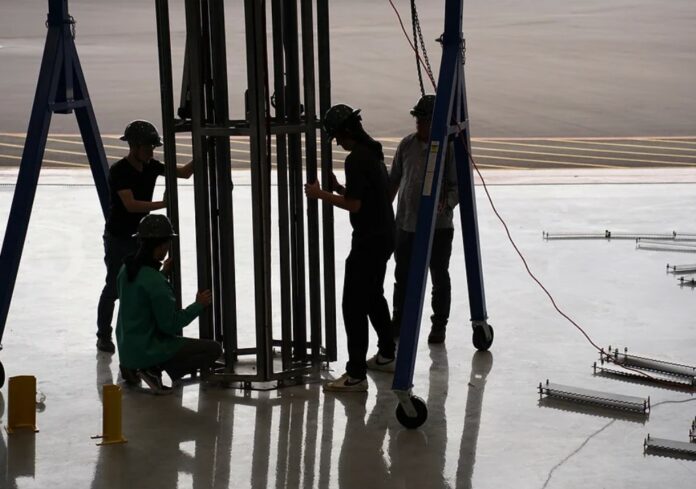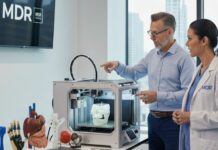OEM Rosotics turned stealth mode off in 2023 with the launch of an intriguing metal 3D printer. The technology always meant for demanding industries will no longer be available for commercialization as the company decided to use it exclusively for serving the aerospace and defense sectors.
Christian LaRosa’s vision is to establish the company as a complete operator of autonomous infrastructure in the orbital regime.
Since inception, the company, backed by Tim Draper and scouted by both Sequoia Capital and Andreessen Horowitz (a16z), has deployed just $2.6 million in funding to accelerate its large-scale metal 3D printing. While conservative in comparison to names such as Relativity Space, the company has developed and deployed a highly advanced manufacturing process that has been evaluated by many in the aerospace industry and described as “the most advanced, complex metal additive process ever devised”. The performance of the Halo platform attracted initial interest from the likes of Relativity Space and RTX, and in particular, Jim Cantrell, who served on the founding team of SpaceX and personally as Elon Musk’s early mentor. In 2024, he described the system as “ideal for the industrial-scale production of things like rocket stages, and we’ll be buying one of their machines” – a statement, according to LaRosa, the company plans to uphold, reaffirming “every current order on our roster will be honored, but we will need every last unit going forward”.
Among changes LaRosa announced the departure of Austin Thurman, Co-Founder and COO, which he described as “positive on both sides, and full of optimism for both of our journeys ahead”, as well as the relocation of its corporate headquarters from Mesa, AZ to new facilities in Cape Canaveral, FL, from which he is recruiting specialized talent in preparation for vehicle production and spaceflight operations. In addition, Rosotics is acting to consolidate its operations in the naval and maritime sectors with a selection of industry partners in order to strengthen its financial position and reassert focus, markets it will no longer serve directly. On the topic of this decision, LaRosa stated “we believe others exist who are better stanced operationally to service maritime, and we will supply them with what they need to get our stack serving those applications quickly under their own name”. Rosotics will realign its team and manufacturing platforms, solely to the industrialization of space.
This plan, detailed further today by Rosotics, is focused on a point of gravitational stability near the Earth and the Moon, known as the L5 Lagrange point, originally advocated for by Gerard O’Neill in 1974 as an ideal location for orbital infrastructure. Using a low-energy, translunar flight profile the company has been architecting for five years, Rosotics plans to send multiple autonomous spacecraft around the moon in a complex maneuver before injecting them into orbit around L5, where they will benefit from the location’s gravitational stability. These spacecraft, heavily mass-optimized to maximize payload by the use of a large 3D printed, unpressurized hull will each deliver dozens of smaller vehicles to L5, and be cannibalized to facilitate the construction of a large orbital station. As detailed, this station will serve as a propellant depot, though servicing missions over time will expand the range of capabilities into power generation and materials processing. This infrastructure is intended to forever hold orbit at L5 without a need to expend fuel to maintain position, and will be accessible for direct commercial utilization. LaRosa cited this plan as the core factor which led him to judge their manufacturing processes by power efficiency and bet on induction years prior – far more heavily than others in the field. LaRosa further stated that the Halo platform was implicitly designed for production of the spacecraft’s design.
“Our demand for Halo printers internally is already significant”, said Christian. “While we will lose the opportunity for some immediate term revenue from these machines, the true value in our opinion is in what it will enable us to do when we have scale quantities of them vertically integrated and in-house. Also, we’ve been extremely impressed with others in the field that can more rapidly deploy the architecture across without stretching our base focus,” Christian LaRosa, founder and CEO concludes.
Remember, you can post free-of-charge job opportunities in the AM Industry on 3D ADEPT Media or look for a job via our job board. Make sure to follow us on our social networks and subscribe to our weekly newsletter: Facebook, Twitter, LinkedIn & Instagram! If you want to be featured in the next issue of our digital magazine or if you hear a story that needs to be heard, make sure to send it to contact@3dadept.com.






